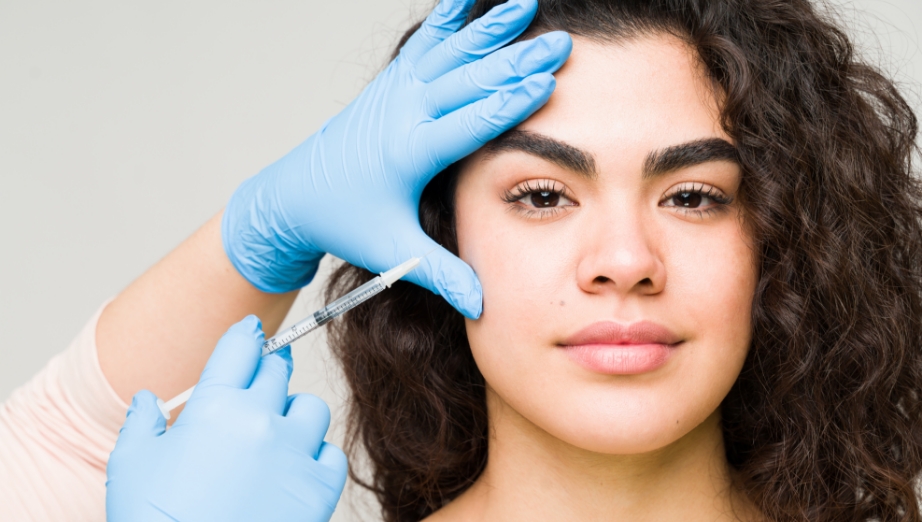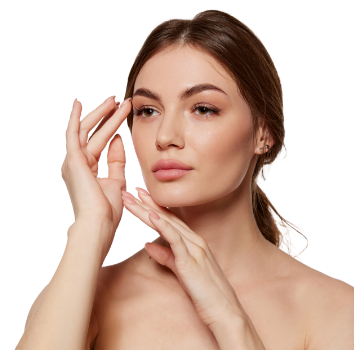The temple region, located between the forehead and the upper cheek, plays an important role in the overall contour and proportion of the face.
A Temple Area Consultation at Shellharbour Skin provides an opportunity to discuss anatomical changes, contributing factors, and safe management options for this delicate part of the upper face.
This consultation focuses on education, anatomical understanding, and safety planning.
It is not designed to promote a particular aesthetic service, but rather to help you understand the factors that contribute to visible change and to discuss appropriate management pathways under qualified medical supervision.
Understanding Why the Temple Area Changes
The temples form part of the upper third of the face and are closely connected to the brow, forehead, and upper cheek.Changes in this region may occur gradually and are often a combination of natural ageing, genetics, and lifestyle influences.
Contributing factors can include:
Genetic structure: Differences in bone width and soft-tissue depth influence facial contour.
Volume redistribution: Natural shifts in soft tissue and fat pads can change upper-face fullness.
Reduced collagen and elastin: Over time, this affects skin integrity and support.
Sun exposure and lifestyle: Environmental factors can accelerate visible skin changes.
Muscular activity: Repeated facial expressions and tension can alter appearance over time.
Understanding these mechanisms allows your clinician to discuss your concerns within a biological and structural context, ensuring any management plan is based on safety and evidence.
Your Consultation at Shellharbour Skin
Your appointment is a detailed, discussion-based consultation that focuses on your individual anatomy and medical background.
During the consultation, your clinician will:
- Review your medical history, allergies, medications, and previous procedures
- Assess the temple and surrounding structures (brow, cheek, forehead) to understand overall proportion
- Explain how facial ageing and soft-tissue changes occur naturally
- Provide educational information on safe management options and relevant safety considerations
- Outline potential risks, limitations, and aftercare principles
- Offer the opportunity to ask questions or raise any concerns at each stage
All consultations are conducted under medical supervision by qualified practitioners experienced in upper-face anatomy and aesthetic assessment.
No intervention is performed without confirmed suitability and informed consent.

Clinical Discussion and Management Planning
Following assessment, your clinician may outline possible management pathways or non-surgical clinical discussions suited to your individual needs.
These discussions are educational and designed to help you understand available safety, suitability, and timing considerations, not to imply or promote a particular outcome.
Topics that may be discussed include:
- Observation or monitoring where intervention is not required
- Consideration of non-surgical clinical approaches to support skin integrity or facial balance
- Discussion of contributing regions such as the forehead, brow, or mid-face that affect upper-face harmony
No procedure is undertaken without full medical assessment, confirmed suitability, and informed consent.Your clinician will ensure you understand all associated information, risks, and aftercare recommendations before any next steps.
Aftercare and Follow-Up
If a management pathway is undertaken, mild swelling, redness, or tenderness may occur temporarily. These are normal short-term effects that usually subside within several days.
Your clinician will provide tailored aftercare guidance, which may include:
- Avoiding makeup and active skincare for 24–48 hours
- Refraining from strenuous exercise and heat exposure for several days
- Avoiding pressure, massage, or manipulation of the area
- Sleeping with the head elevated to reduce swelling
- Attending any follow-up appointments if advised
Written aftercare instructions and contact information will be provided after your consultation.
Risks and Considerations
All aesthetic and medical interventions carry potential risks.
The temple area is anatomically close to key blood vessels and nerves, requiring careful assessment and precision.
Common temporary effects may include:
- Mild swelling or bruising
- Localised tenderness
- Redness or temporary firmness at the site
Less common or serious risks may include:
- Prolonged inflammation or swelling
- Skin discolouration or irregular texture
- Infection or delayed healing
- Allergic or inflammatory response
- Vascular compromise (interruption of blood flow), which in rare cases can affect surrounding tissue or vision
- Localised numbness or discomfort
If you experience pain, colour changes, or visual disturbance after any clinical treatment, contact the clinic or seek urgent medical attention.
Cost and Planning
Consultation fees for temple assessments vary depending on appointment time and complexity.
Your clinician will confirm all costs before your consultation.
If a management pathway is discussed, it will be outlined and cost separately following your clinical evaluation. No intervention is undertaken without prior informed consent.
Important Information
- Shellharbour Skin provides consultations for aesthetic assessment and management planning only.
- We do not advertise or promote prescription-only medicines in accordance with AHPRA and TGA regulations.
- All consultations and any subsequent procedures occur only after a full medical assessment and informed-consent process.
- Suitability, recovery, and experience vary between individuals.
- Services are available to adults aged 18 years and over.
- This information is provided for educational and transparency purposes and should not replace medical advice.
Practitioner Transparency
Consultations and skin treatments at Shellharbour Skin are provided by a multidisciplinary clinical team:
Dermal Clinicians – qualified skin professionals who are not registered under AHPRA but hold tertiary qualifications in dermal science or dermal therapies. They provide skin treatments and consultations within their professional scope and under clinical supervision.
Registered Nurses – AHPRA-registered health practitioners who perform skin and aesthetic treatments within their clinical training and scope of practice.
Medical Practitioners – AHPRA-registered doctors experienced in skin health and aesthetic medicine who oversee and support all clinical services.
All treatments are undertaken within a medically supervised environment, ensuring that each patient pathway is reviewed for clinical suitability, safety, and evidence-based care.
You can verify registration for medical practitioners and nurses at ahpra.gov.au
Frequently Asked Questions
Why is the temple area important in facial balance?
The temples form part of the upper third of the face and play a key role in maintaining harmony between the forehead, brow, and cheek. Changes in this region can subtly alter overall facial proportions and the perception of contour or symmetry.
Understanding this anatomy helps guide safe, evidence-based management discussions rather than focusing on aesthetic trends or outcomes.
Are prescription medicines used for temple concerns?
Some management approaches may involve prescription-only medicines.
These are not advertised or promoted publicly and are discussed only following in-person medical evaluation by a qualified prescriber, consistent with AHPRA and TGA advertising standards.
If you have a question, get in touch and one of our staff will be in touch shortly.




